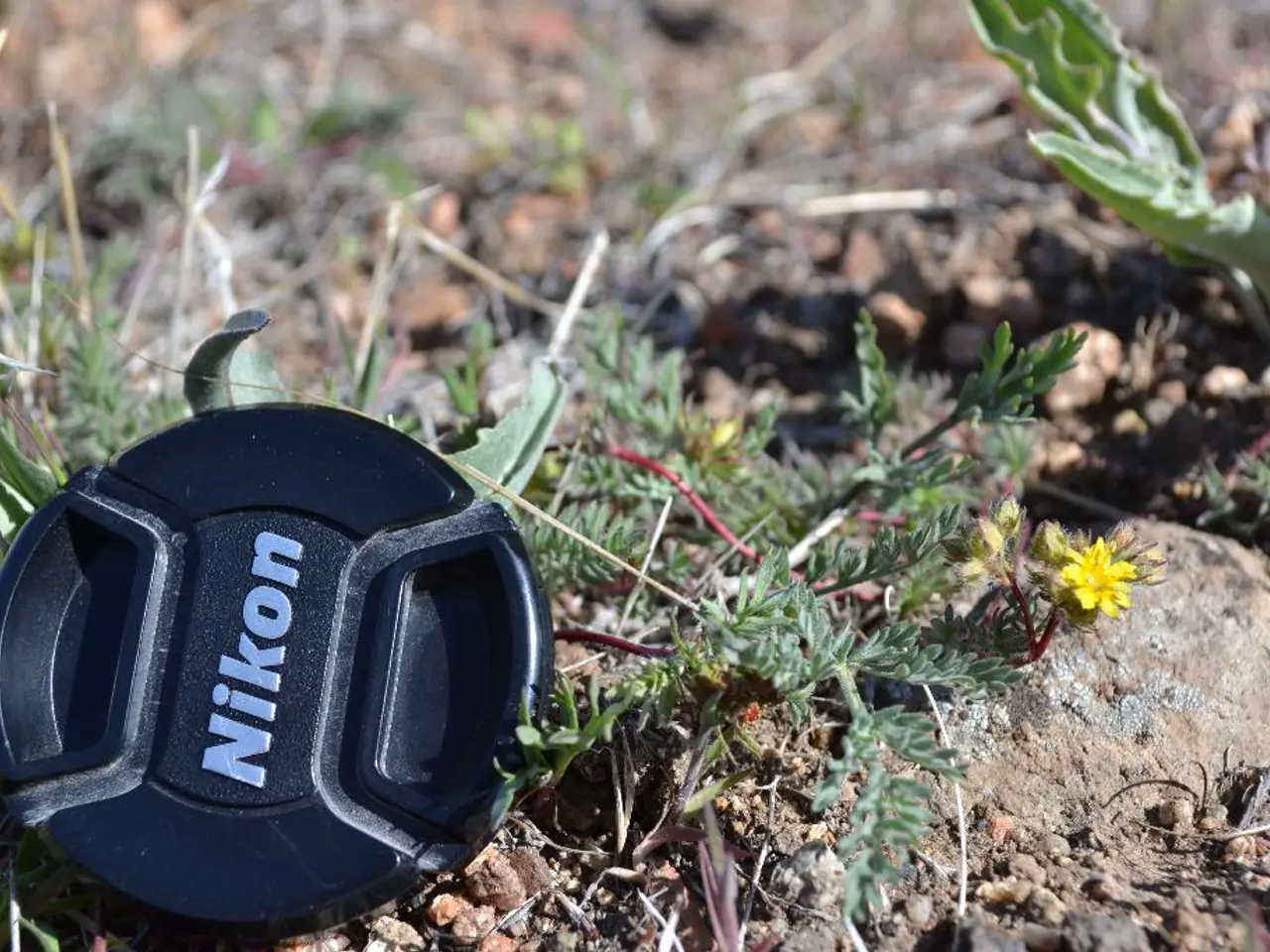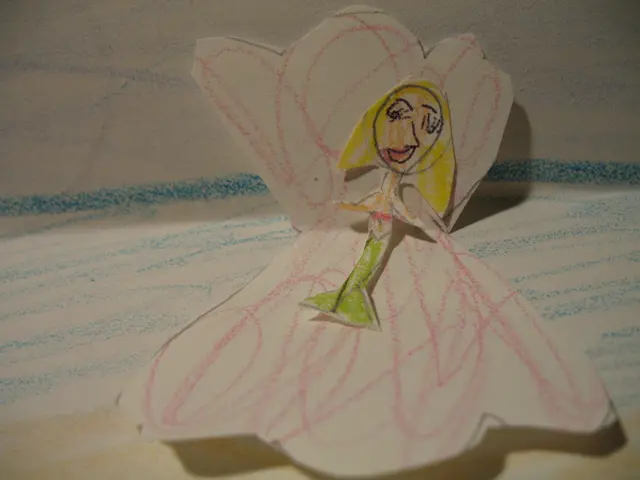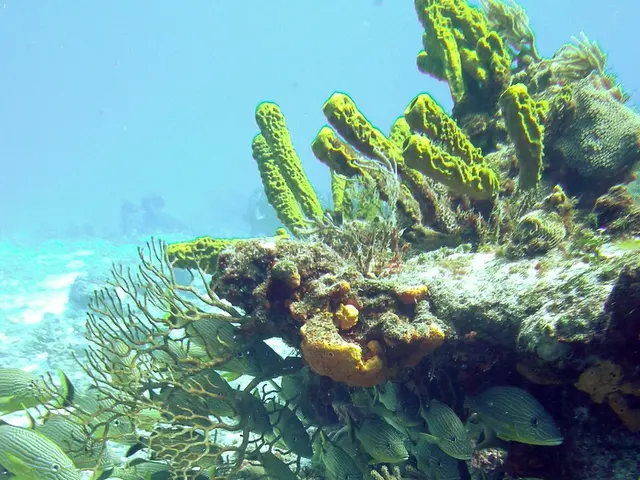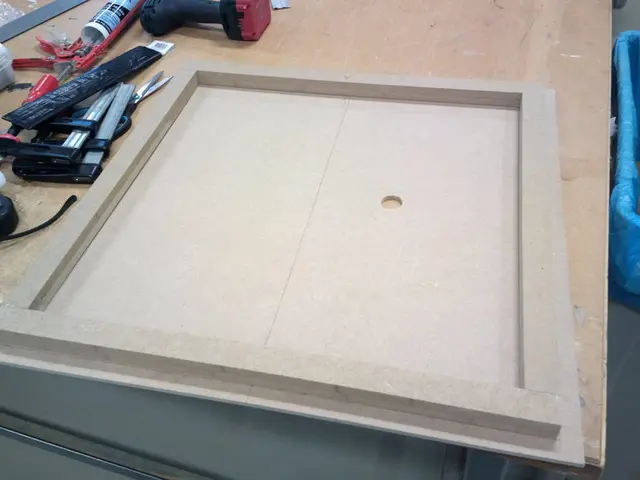Effortless and Earth-friendly choices for your yard, eschewing traditional grass lawns
In an effort to reduce maintenance, water usage, and environmental impact, homeowners in Australia are increasingly turning to eco-friendly alternatives for their lawns. These options, which range from native grasses to synthetic turf, offer a variety of benefits that cater to different needs and preferences.
One popular choice is native grasses and native plant gardens. These require far less watering, mowing, and fertilizing than traditional grass lawns due to their adaptation to the Australian climate. Not only do they support biodiversity by providing habitat for pollinators like bees and butterflies, but they also boost local ecosystems [1].
Clover lawns and creeping thyme are another option. These ground covers use less water, don't need fertilizers, and increase biodiversity. Clover, in particular, is resilient and can enrich soil nitrogen naturally, reducing chemical needs [1][4].
Buffalo grass and other low-water grasses are also suitable for many Australian backyards with lower water demands than traditional turf [1]. Ground covers such as dichondra or pratia require less mowing and help suppress weeds and retain moisture, making them ideal for erosion control and adding texture and colour without high upkeep [3].
Xeriscaping, landscaping with drought-tolerant, native plants combined with rocks, pavers, or gravel, minimises irrigation and maintenance drastically, creating a sustainable and attractive landscape [1][3]. Synthetic/artificial grass eliminates watering and mowing entirely, reducing water consumption and maintenance enormously. However, it's important to note that although Australian-made synthetic turfs are designed to withstand harsh climates and are safe for kids and pets, they may still have environmental concerns related to production and disposal [2].
Wildflower meadows or native seed mixes can create a low-mow, naturalistic lawn alternative that supports local wildlife and uses minimal resources [5]. Pavers or a patio can reduce the amount of lawn and provide outdoor entertaining spaces.
Using multiple landscaping features to replace all or some of your lawn can save time, resources, and money. For instance, replacing a grass lawn with mulch garden beds, stone pavers, and ground cover plants can significantly reduce time, energy, water, and maintenance costs.
To remove a lawn, one can use a spade and elbow grease for smaller lawns, or smother the lawn with materials like cardboard, plastic tarps, or metal sheeting for larger lawns. Smothering a lawn can take one to three months, depending on the type of grass [6]. Removing grass 'runners' (thick grass roots) is necessary to prevent the lawn from growing back.
After removing a lawn, the soil should be aerated, broken up, and enriched with organic material like compost or manure. Planting a vegetable garden around a lawn can reduce the time spent mowing and potentially reduce the grocery bill, as these gardens thrive in lawns that receive at least four hours of full sun per day [7].
It's worth noting that lawns use up to 90% of all water expended in gardens, according to Your Home, the Australian Government's environmentally sustainable home guide [8]. Traditional grass lawns require a lot of water to remain healthy, accounting for up to 90% of all water expended in gardens.
However, it's essential to be aware that synthetic grass does not break down and removes food and habitat for insects and birds. Furthermore, meadow gardens, while low maintenance, more resilient, and biodiverse than conventional low-maintenance plantings, may not be suitable for all areas due to local by-laws [9].
In conclusion, the most sustainable and low-maintenance options for Australian gardens blend native grasses, clover, ground covers, and xeriscaping with rocks or gravel, or alternatively, synthetic grass where water conservation is a priority. These options collectively reduce water use, eliminate the need for chemical treatments, lower mowing labor, and foster biodiversity in Australian gardens [1][3][4][5].
Homeowners in Australia can opt for a sustainable lifestyle by incorporating home-and-garden practices such as gardening with native grasses and plants, like clover and creeping thyme, which require less water and maintenance compared to traditional grass lawns. Furthermore, embracing xeriscaping by landscaping with drought-tolerant native plants combined with rocks, pavers, or gravel, can significantly minimize irrigation and maintenance, promoting a more eco-friendly home-and-garden lifestyle.







